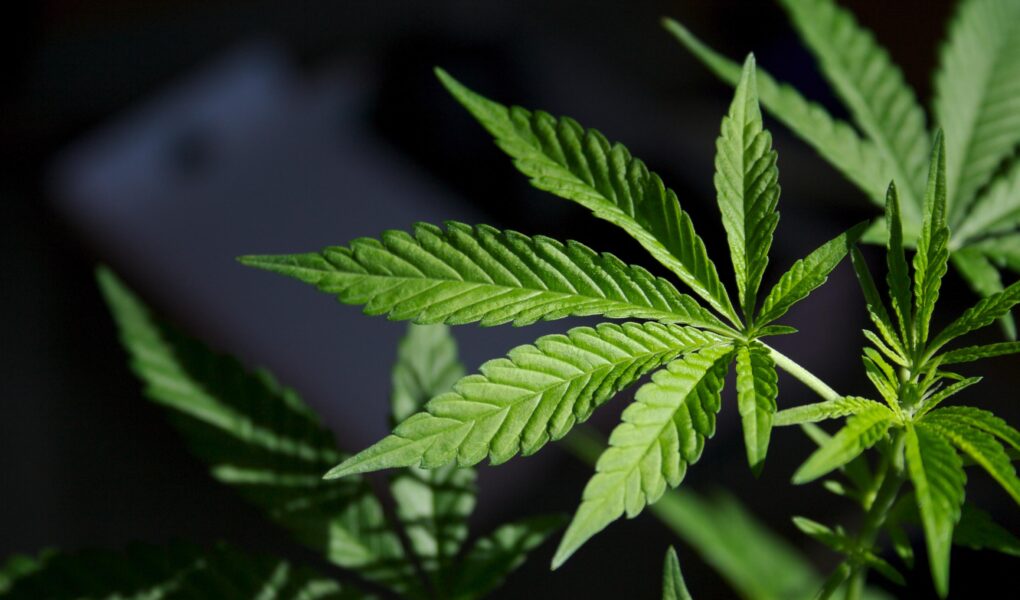Title: The Green Enigma: Is Marijuana Truly a Plant?
In a world teeming with vibrant flora, few plants have sparked as much curiosity, debate, and controversy as marijuana. With its rich history woven into the fabric of ancient civilizations, its emergence into contemporary culture, and its burgeoning role in medicine and recreation, marijuana invites us to explore the very essence of what defines a plant. As we journey through its botanical characteristics, cultural significance, and legal landscape, we will unravel the complexities surrounding this enigmatic organism. Join us as we delve into the question at hand: is marijuana merely a plant, or does it represent something far greater in our society?
Table of Contents
- Understanding the Botanical Classification of Marijuana
- Exploring the Diverse Species within the Cannabis Family
- Examining the Cultivation Practices for Sustainable Growth
- Navigating Legal Considerations and Health Implications of Cannabis Use
- Q&A
- The Way Forward
Understanding the Botanical Classification of Marijuana
To delve into the botanical classification of marijuana, it’s important to recognize that this plant belongs to the Cannabis genus within the Cannabaceae family. Its taxonomy can be quite intricate, often leading to the identification of three primary species: Cannabis sativa, Cannabis indica, and Cannabis ruderalis. Each species has unique characteristics that influence its growth patterns, chemical composition, and effects on users. Here’s a brief overview of each:
- Cannabis sativa: Typically grown for its psychoactive properties, this species is known for its uplifting effects and higher THC content.
- Cannabis indica: Often favored for its relaxing qualities, this variety is used predominantly for its medicinal properties and can promote sedation.
- Cannabis ruderalis: Lesser known and typically lower in THC, this species is recognized for its auto-flowering capabilities, allowing it to thrive in various environments.
The plant’s classification also extends to cultivars and hybrids, which are bred from these primary species to enhance specific traits such as flavor, aroma, potency, and growth behavior. Additionally, there are notable distinctions in the chemical profiles of various strains, chiefly the ratios of THC (tetrahydrocannabinol) and CBD (cannabidiol), that shape user experiences and medicinal applications. Understanding these classifications is crucial for consumers, growers, and researchers alike as they navigate the complexities of marijuana and its diverse offerings.
| Species | Common Effects | Uses |
|---|---|---|
| Cannabis sativa | Energetic, Uplifting | Recreational, Creativity |
| Cannabis indica | Relaxing, Sedative | Medicinal, Sleep Aid |
| Cannabis ruderalis | Mild, Auto-flowering | Hybrid Breeding |
Exploring the Diverse Species within the Cannabis Family
The cannabis family boasts a rich tapestry of species, each with its own unique characteristics and applications. The most commonly known member is Cannabis sativa, often cultivated for its psychoactive properties and robust commercial potential. In contrast, Cannabis indica tends to be favored for its medicinal benefits, commonly associated with relaxation and relief from anxiety. Additionally, the lesser-known Cannabis ruderalis is a hardy variant that thrives in harsh climates and is often used for breeding auto-flowering hybrids that require less attention and specific environmental conditions.
Within this fascinating family, other notable species include various hybrids that blend traits from both sativa and indica. This genetic diversity allows for tailored effects, catering to both recreational users seeking euphoria and medicinal users needing relief. Here are some highlighted benefits and traits of these species:
- Cannabis sativa: Energizing, uplifting effects.
- Cannabis indica: Calming, soothing properties.
- Cannabis ruderalis: Fast-growing, adaptive qualities.
- Hybrids: Customizable effects based on desired use.
Examining the Cultivation Practices for Sustainable Growth
The cultivation of marijuana requires a thoughtful approach to achieve sustainable growth while maximizing both yield and potency. Farmers who focus on eco-friendly practices often turn to organic methods, which minimize the use of synthetic fertilizers and pesticides. This not only nurtures the soil and surrounding ecosystems but also enhances the overall quality of the plant. Key practices include:
- Crop rotation to maintain soil health.
- Companion planting to deter pests naturally.
- Water conservation techniques such as drip irrigation.
- Use of cover crops to enrich the soil.
Implementing such sustainable practices can also lead to more resilient plants that better withstand climatic changes and fight off diseases. A carefully planned cultivation strategy can involve the selection of genetically diverse strains which not only boosts biodiversity but also mitigates the risks associated with monoculture farming. The following table highlights the benefits of various sustainable cultivation methods:
| Method | Benefits |
|---|---|
| Organic Fertilizers | Improves soil fertility, reduces chemical runoff. |
| Permaculture | Creates a sustainable ecosystem, boosts biodiversity. |
| Integrated Pest Management | Minimizes pest damage, reduces reliance on chemicals. |
| Aquaponics | Utilizes fish waste to nourish plants, maximizes space. |
Navigating Legal Considerations and Health Implications of Cannabis Use
As cannabis continues to gain popularity both socially and medicinally, it’s essential to consider the myriad of legal regulations that govern its use. Different regions enforce varying laws surrounding cultivation, distribution, and consumption, which can be overwhelming to navigate. Understanding the legal landscape is crucial for anyone looking to explore cannabis, whether for personal use or as part of a business venture. This includes being aware of:
- State Laws: Each state may have its own legislation regarding marijuana, affecting everything from possession limits to where it can be purchased.
- Federal Regulations: Cannabis remains classified as a Schedule I drug in the U.S., complicating legality across state lines.
- Health Considerations: Users should be aware of potential side effects and health risks associated with cannabis use, including mental health impacts and dependency.
Moreover, the health implications associated with cannabis use add another layer of complexity. While some individuals find relief in medical marijuana for conditions such as chronic pain, anxiety, or nausea, it is vital to consider both short-term and long-term health effects. Studies suggest that cannabis can have varying impacts on the body, including effects on:
| Health Effects | Short-Term Impact | Long-Term Impact |
|---|---|---|
| Mental Health | Increased anxiety or paranoia | Potential for dependence |
| Respiratory Health | Irritation of airways | Chronic bronchitis risks |
| Cognitive Function | Impaired short-term memory | Persistent cognitive decline in heavy users |
Q&A
Q&A: Is Marijuana a Plant?
Q1: What exactly is marijuana?
A1: Marijuana, scientifically known as Cannabis sativa, is indeed a plant! It belongs to the Cannabaceae family and has been cultivated for centuries for its fibers, seeds, and psychoactive properties. The plant can be found in various forms, each with different levels of active compounds, mainly THC (tetrahydrocannabinol) and CBD (cannabidiol).
Q2: Are all cannabis plants considered marijuana?
A2: Not all cannabis plants are classified as marijuana. The Cannabis genus consists of several species, with Cannabis sativa and Cannabis indica often associated with marijuana. In contrast, Hemp, another variety from the same genus, is cultivated primarily for industrial uses and has very low levels of THC. So while all marijuana is cannabis, not all cannabis is marijuana!
Q3: What parts of the marijuana plant are used?
A3: The flowers, or buds, of the marijuana plant are the most commonly used parts due to their high concentrations of THC and CBD. Other parts like leaves and stems can also be utilized in various ways, including making edibles and oils, while the seeds are often used for hemp products.
Q4: Why is marijuana so often in the news?
A4: Marijuana garners attention due to its complex role in society, particularly regarding legality and medical use. As more places move towards legalization, discussions surrounding its benefits and risks, as well as its potential economic impact, are increasingly prevalent.
Q5: Can you explain the difference between marijuana and hemp?
A5: Absolutely! The primary difference between marijuana and hemp lies in their THC content. Marijuana typically contains 5% to 30% THC, the compound responsible for its psychoactive effects, while hemp contains less than 0.3% THC. This significant difference in chemical composition leads to different uses and legal statuses for the two plants.
Q6: Is marijuana only used recreationally?
A6: While recreational use is widely discussed, marijuana also has a significant role in medicine. Many people use it for therapeutic purposes, such as pain relief, nausea reduction, and anxiety management. The evolving landscape of research continues to unveil its potential medical benefits and applications.
Q7: How does the cultivation of marijuana differ from other plants?
A7: Cultivating marijuana can be more complex due to its specific light, temperature, and nutrient requirements. Growers often monitor and tweak environmental factors closely to optimize yield and potency. Additionally, marijuana is usually grown in controlled conditions to manage its psychoactive properties and prevent unwanted growth of male plants, which can reduce potency in the harvested buds.
Q8: What is the future for marijuana as a plant and a product?
A8: The future of marijuana is bright and varied! As more research is conducted and societal perceptions shift, both its medicinal applications and agricultural potential are likely to grow. Innovations in breeding and cultivation may lead to new strains and products, making marijuana a prominent player in both health and industrial markets.
With its fascinating history and ongoing evolution, the question of whether marijuana is a plant opens the door to a deeper discussion on its variety, uses, and implications for society.
The Way Forward
As we wrap up our exploration of the botanical intricacies of marijuana, it becomes clear that this plant is much more than just a subject of debate. From its origins in ancient civilizations to its modern-day applications, cannabis is a remarkable organism with diverse roles in medicine, culture, and agriculture. Understanding whether marijuana qualifies as a plant is not merely an academic exercise; it prompts us to consider our relationship with the natural world and how we define the boundaries of nature itself. As we continue to scrutinize and appreciate the complexities of this species, we invite you to reflect on the myriad ways plants, including marijuana, contribute to our lives. Ultimately, it is this shared tapestry of life that invites curiosity, encourages dialogue, and fosters understanding of the wondrous world we inhabit.



